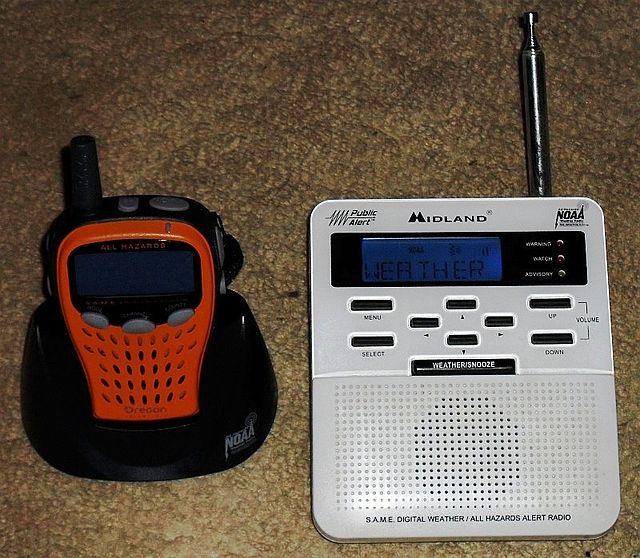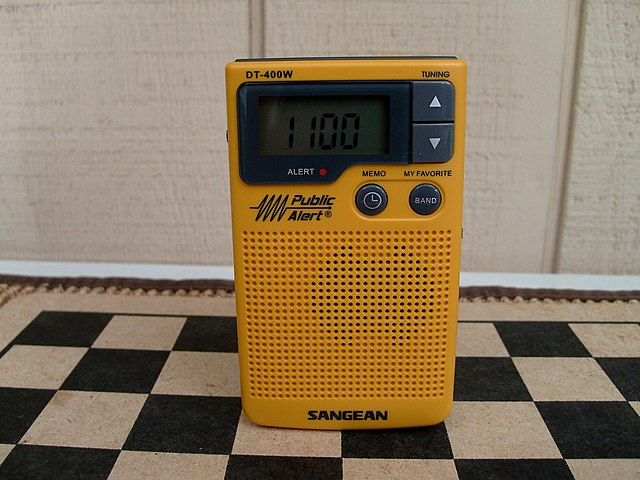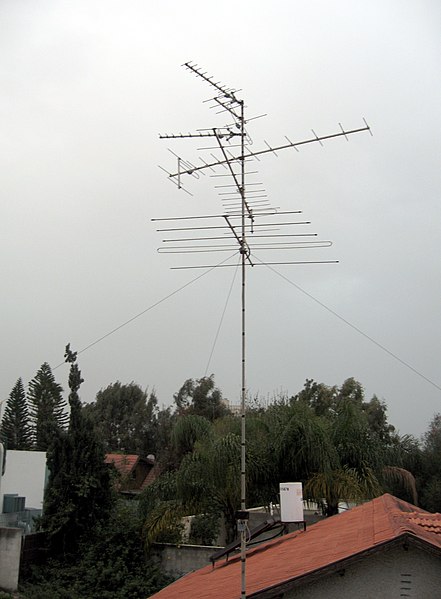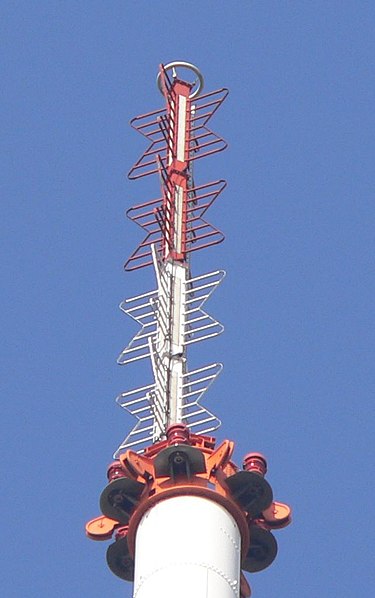A weather radio is a specialized radio receiver that is designed to receive a public broadcast service, typically from government-owned radio stations, dedicated to broadcasting weather forecasts and reports on a continual basis, with the routine weather reports being interrupted by emergency weather reports whenever needed. Weather radios are typically equipped with a standby alerting function—if the radio is muted or tuned to another band and a severe weather bulletin is transmitted, it can automatically sound an alarm and/or switch to a pre-tuned weather channel for emergency weather information. Weather radio services may also occasionally broadcast non-weather-related emergency information, such as in the event of a natural disaster, a child abduction alert, or a terrorist attack.

Two types of weather radio receivers; the common Midland home weather radio (model WR-100) to the right is often the most popular and known unit sold in the United States, while the orange Oregon Scientific model on the left is portable and water-resistant for outdoor use.
Sangean DT-400W (10711303835)
Wib2bx
Very high frequency (VHF) is the ITU designation for the range of radio frequency electromagnetic waves from 30 to 300 megahertz (MHz), with corresponding wavelengths of ten meters to one meter.
Frequencies immediately below VHF are denoted high frequency (HF), and the next higher frequencies are known as ultra high frequency (UHF).
VHF television antennas used for broadcast television reception. These six antennas are a type known as a Yagi antenna, which is widely used at VHF.
"Rabbit-ears" VHF television antenna (the small loop is a separate UHF antenna)
A VHF television broadcasting antenna. This is a common type called a super turnstile or batwing antenna.






